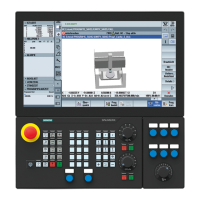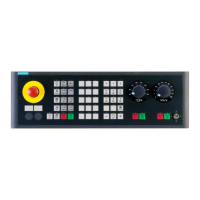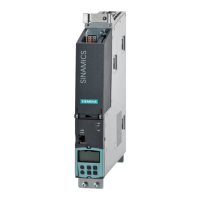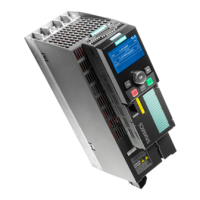10.03
3.9 Fine adjustment and optimization
3-72
Siemens AG, 2003. All rights reserved
SINUMERIK 840D/SIMODRIVE 611 digital, HLA Module (FBHLA) - 10.03 Edition
Test run:
S As long as the damping effect improves, the the D-action time value can be
raised further:
S Leave D-action time at its old value if the damping effect does not improve.
(see Fig. 3-22 - f
)
The smoothing time constant is set to values w 1 ms as a function of the con-
trolled system for “Calculate controller”.
Owing to the fact that a derivative action amplifies the actual value noise, it is
necessary in this case to find a compromise between
S the derivative action (and thus vibration damping)
(MD 5430: SPEEDCTRL_PT1_TIME as low as possible, i.e. high corner
frequency of D-action component or wide D-action frequency range)
and
S the noise of the manipulated variable.
Like the P component setting, the optimization criterion here is the maximum
acceptable overshoot of the closed velocity control loop.
The main area of application is the valve/cylinder combination f
(see Fig. 3-24)
with values T
V
>>0.
For applications f
+ f
(see Figs. 3-22, 3-23) improvements of the damping
characteristics are only to be expected at specific points when T
V
}0. In most
cases T
V
=0 is the best choice.
Note
A second iteration loop (optimize P and D components) with further
improvements can be connected in series downstream.
S Integrator/reset time (T
N
)
Objective: Elimination of errors in feedforward control channel.
Implementation: T
N
>5 ms taking the overshoot
of the valve frequency response into account.
Note
The I component is deactivated if T
N
=0 (MD 5409) or if the P component is
zero (MD 5406=0, MD 5407=0, MD 5408=0).
Optimization of
controller
I component
02.99
